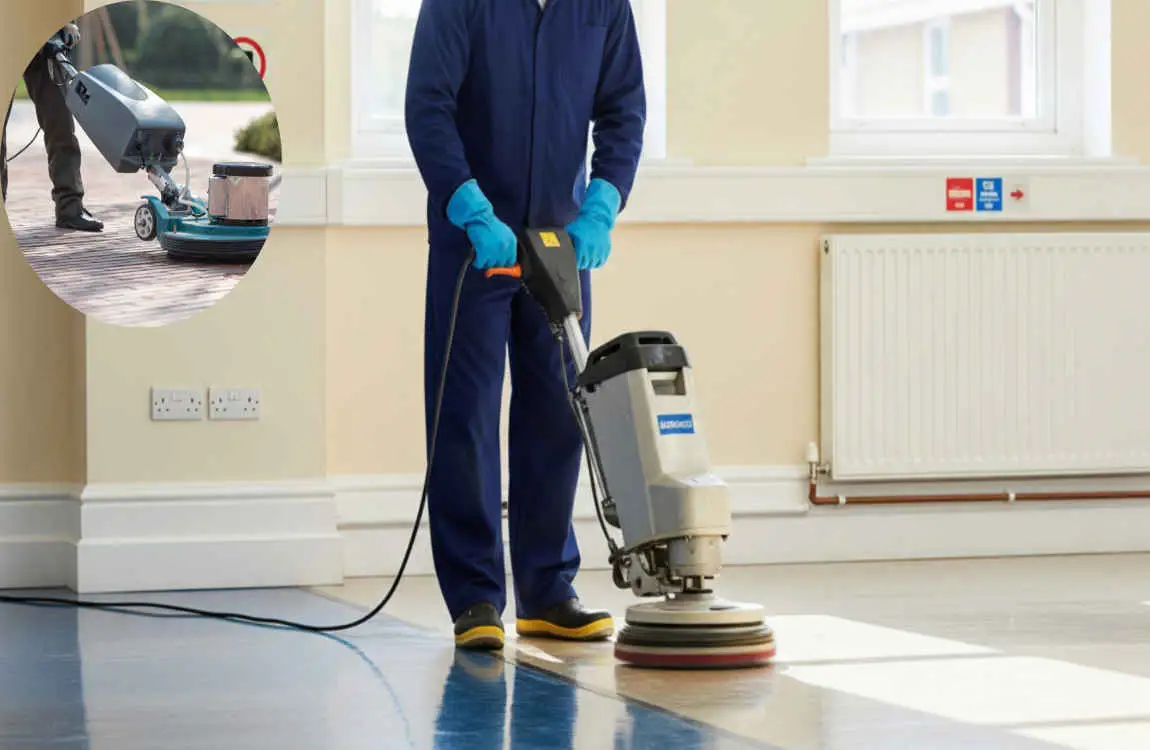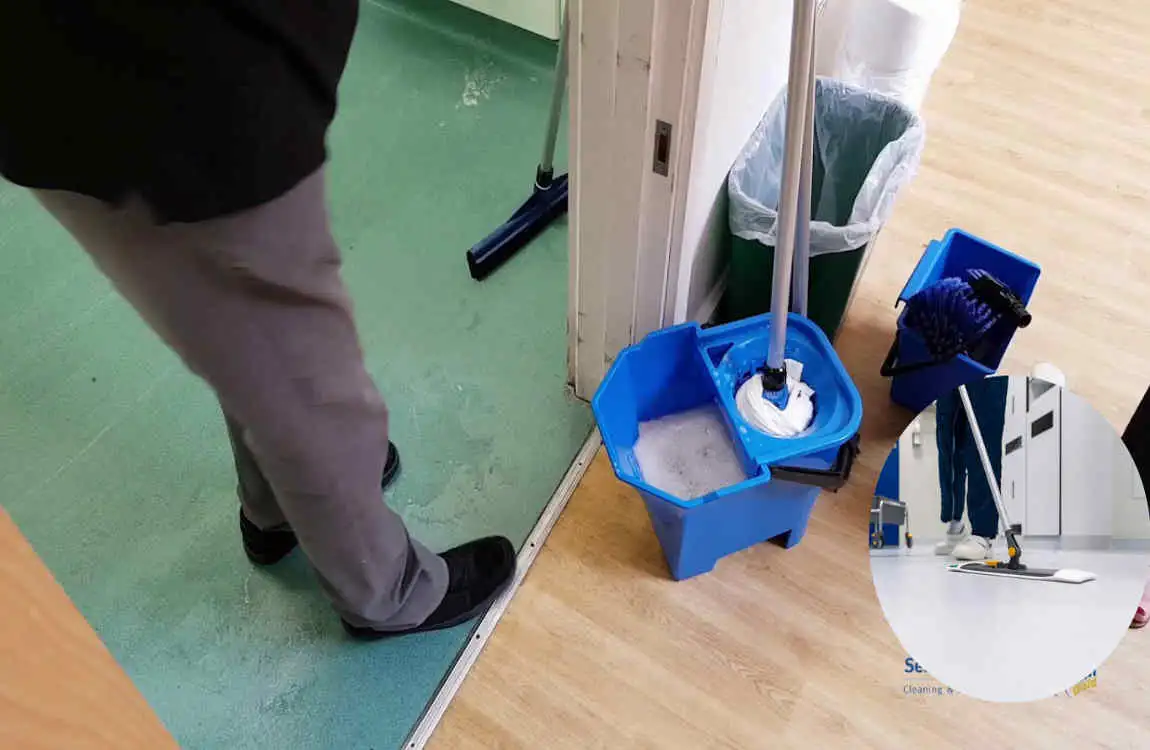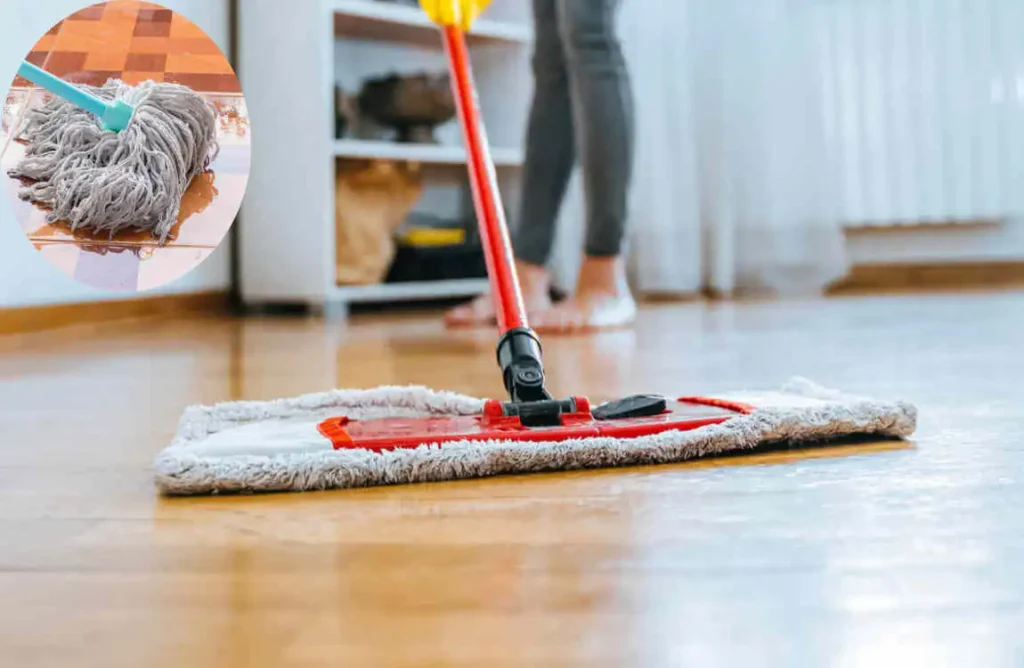Safety flooring is designed to provide slip resistance and prevent accidents, but cleaning it at home requires special care to maintain its texture and effectiveness. The best method involves using the right equipment, such as a flat mop with a removable microfiber pad, understanding the type of dirt to select the appropriate cleaning method, and applying a pH-neutral detergent with a spray-and-buff technique. Avoid cotton mops that can leave fibres behind, and make sure to rinse and dry the floor thoroughly to preserve its slip resistance. Regular cleaning prevents dirt buildup and keeps safety home flooring both clean and effective.
What is Safety Flooring?

Safety flooring is a specialised type of flooring designed to minimise the risk of slips and falls. It typically features textured surfaces that provide enhanced grip, making it particularly suitable for high-traffic areas or environments prone to moisture.
Commonly found in places like gyms, hospitals, schools, and homes with children or elderly residents, safety flooring comes in various materials such as vinyl, rubber, and carpet tiles. Each offers different benefits tailored to specific needs.
Importance of Cleaning Safety Flooring
Cleaning safety flooring is crucial for maintaining a healthy home environment. Safety flooring often features textured surfaces designed to prevent slips and falls, but dirt and grime can accumulate over time. This buildup not only diminishes the floor’s effectiveness but also poses hygiene risks.
Regular cleaning helps preserve the material’s integrity. It prevents long
Establishing a cleaning routine ensures that both aesthetics and functionality remain intact, providing peace of mind regarding safety at home.
Materials Needed for Cleaning Safety Flooring

Cleaning safety flooring requires specific materials to ensure both effectiveness and protection. Start with a broom or vacuum cleaner to remove loose dirt and debris. These tools help prevent scratches during the cleaning process.
Step-by-Step Guide to Cleaning Safety Flooring
Start by preparing the area. Remove furniture and any obstacles on the floor. This makes it easier to access every corner while cleaning.
Next, sweep or vacuum thoroughly to eliminate dirt and debris. Use a soft-bristle broom or a vacuum with a suitable attachment to avoid scratching the surface.
Choosing the proper cleaning solution is crucial. Look for pH-neutral cleaners specifically designed for safety flooring materials like vinyl or rubber. Avoid harsh chemicals that can damage your floor.
You may also read (what makes the dont worry darling house interior unique ).
Preparing the area
Before diving into cleaning safety flooring, it’s crucial to prepare the area properly. Start by clearing any furniture or obstacles from the floor. This ensures you have full access to every inch of the surface.
Ensure good ventilation in the space by opening windows or doors if possible. Fresh air can help dissipate any odours and dry out wet surfaces more quickly after cleaning.
Gather all necessary supplies within arm’s reach before starting. This includes brooms, mops, buckets, and your chosen cleaner. Having everything prepared saves time and makes the whole task feel less overwhelming.
Sweeping and vacuuming
Start by using a broom to clear away loose debris. Safety home flooring can trap dirt and dust, making regular sweeping essential. Use long, even strokes to cover the entire area effectively.
Vacuuming reaches into crevices where dirt hides better than sweeping alone. Move furniture if possible to access hard-to-reach areas.
Pay attention to corners and edges too—these spots often gather grime unnoticed. A clean sweep means less buildup later on, paving the way for easier mopping ahead.
Choosing the proper cleaning solution
Selecting the right cleaning solution for safety flooring is crucial. The material of your floor often dictates what products are safe and effective.
Natural solutions like vinegar and water can work wonders on grime without introducing harmful substances into your home. However, always test any new cleaner in a small area first to ensure compatibility.
If you prefer commercial options, consider those specifically designed for safety flooring. These products usually contain anti-slip properties that help maintain the floor’s traction while providing an effective clean.
D. Mopping and scrubbing
Once you’ve swept and vacuumed the area, it’s time to tackle mopping and scrubbing. Start by filling a bucket with warm water mixed with your chosen cleaning solution.
Use a mop that’s suitable for safety flooring—microfiber or sponge mops work well without causing damage. Dip the mop into the solution, wring it out thoroughly to avoid excess moisture, which can seep into seams.
Begin at one corner of the room and make your way across to avoid stepping on clean areas. For stubborn stains or marks, use a soft-bristle scrub brush in circular motions. This helps lift dirt without scratching the surface.
Tips for Maintaining a Clean and Safe Floor
To maintain a clean and safe floor, regular upkeep is key. Establish a routine cleaning schedule that fits your lifestyle, ensuring you stay on top of dirt and grime.
Consider using doormats at entryways to minimise outside debris from entering your home. This simple step can significantly reduce the amount of dirt tracked onto safety flooring.
Always address spills promptly to prevent slips or stains. A quick wipe can save you from future hassle.
Investing in good-quality floor protectors for furniture helps prevent scratches and damage over time.
Educate family members about proper footwear indoors, as specific shoes can leave marks or cause wear on safety flooring.
Never underestimate the power of ventilation; keeping air circulating reduces moisture buildup, which could lead to slippery surfaces.
Common Mistakes to Avoid When Cleaning Safety Flooring
One common mistake is using abrasive cleaners or scrubbers. These can scratch the surface and damage your safety flooring, reducing its effectiveness.
People often underestimate the importance of thorough rinsing after mopping. Residue from cleaning solutions can make floors slippery and unsafe, defeating the purpose of the cleaning.
Failing to inspect the floor for signs of wear or damage regularly is also a misstep. Keeping an eye out for these issues allows you to address them before they become serious problems.
You may also read (discover the art of hardwood home floor refinishing).
